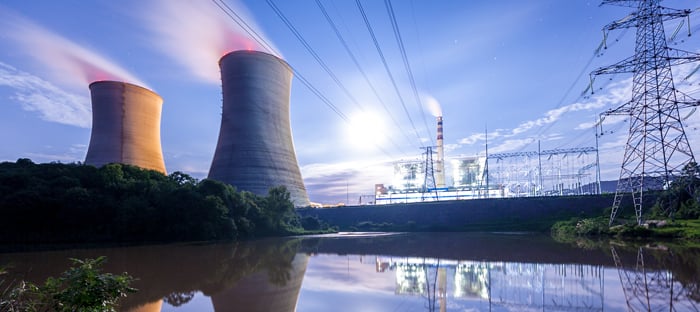Power your home
Enjoy price security with Safe Harbor fixed price energy plans

Power your business

Loading component...
Loading component...
Energy Resources

To many customers, it’s usually not a big deal where their electricity comes from … or even how it gets there. As long as it does. Many of these customers do not understand or think about the jargon and technical terms related to energy deregulation. They may not know what it all means. Let’s explore how electric utilities decide what to charge. We will look at the roles of utilities, suppliers, and generators in the electricity market as well as ways you can save on electricity rates.
Electrical utilities are the companies that deliver electricity to customers, serving people who live or work in their area. Electric utilities hire linemen to electrical utilities are companies that deliver electricity to customers and typically handle the infrastructure, such as electric utility poles, wires, and meters. They are responsible for restoring power after storms, maintaining and fixing downed transmission lines and damaged poles. They also provide customer service and billing.
The electric provider, or supplier, purchases the rights to large volumes of electricity from various power generators (see below) on the wholesale market. Then they sell it to their retail customers, the utility companies or directly to customers. Energy Harbor is a supplier.
Electricity suppliers offer a variety of plans to fix various customer needs. These plans range from traditional fixed-rate electricity options to 100% green energy solutions. Some suppliers also provide bundled packages that come with additional incentives. Explore these options to find the best electricity plan for your needs.
In deregulated markets like Ohio and Pennsylvania, customers can choose their electricity suppliers, often called “retail choice.” Retail choice allows customers to compare various energy providers and select electric plans that best meet their needs, including pricing, term length and renewable energy options.
In Ohio, for instance, the Energy Choice Ohio program enables residents to choose from multiple suppliers while their local utility continues to handle the delivery of electricity. Similarly, Pennsylvania offers PA Power Switch, which helps customers compare and switch energy providers easily.
Creates electricity to sell in the market.
Buys the energy wholesale and offers it to consumers.
Delivers power from grid to user and maintains power lines and utility poles.
Power generators are the companies that produce or make electricity to sell on the wholesale market. Electricity generation is important for producing power. This includes traditional power plants and renewable energy sources. These facilities convert different energy types into electrical power. Traditional power plants typically rely on fossil fuels, such as coal, natural gas, or nuclear energy, to generate electricity. They use processes like combustion or nuclear fission to produce steam, which drives turbines connected to generators, converting mechanical energy into electrical energy.
On the other hand, renewable energy installations harness naturally occurring energy sources. For instance, solar panels convert sunlight directly into electricity through photovoltaic cells, while wind turbines use the kinetic energy of wind to turn blades connected to generators. Hydropower plants utilize flowing water to spin turbines, and geothermal plants tap into the Earth’s heat. This diverse mix of generation methods not only help meet the growing demand for electricity but also supports efforts to reduce greenhouse gas emissions and promote sustainability in the energy sector.
Electricity generators sell their electric output to suppliers or utilities primarily through wholesale markets, where the process resembles a competitive auction. In these markets, generators submit bids indicating the price at which they are willing to sell electricity, typically based on their production costs. Utilities and other load-serving entities then bid for this electricity to meet their customers’ demand. This competitive environment helps keep prices in check, as suppliers seek the most cost-effective options to fulfill their obligations.
When a generator's bid is accepted, electricity is sent through the power grid to utilities, which deliver it to customers. Utilities can also buy electricity directly from generators or through long-term contracts to ensure a stable supply. This competitive system encourages a diverse mix of energy sources, including renewable energy, to enter the market. As a result, customers benefit from more energy choices and potentially lower electricity prices.
Electricity pricing is a process that starts with generation costs, which are the expenses power plants have to produce electricity. These costs include fuel expenses, operational maintenance, and capital investments in technology.
Generators sell this electricity to suppliers or utilities at wholesale rates. These prices can change based on demand, fuel prices, and market conditions.
Suppliers then set retail rates for customers, which reflect these generation costs adding their own operational expenses and profit margins. This pricing structure means that customers often pay a rate per kilowatt-hour (kWh) that varies depending on the supplier and the region.
Utilities charge for delivery through various fees that cover infrastructure maintenance, such as power lines, substations, and transformers. These utility charges typically include fixed costs for maintaining the grid and variable costs based on the amount of electricity used.
In many cases, the total electric utility bill for customers is composed of generation costs, supplier rates, and utility delivery charges, with the latter often accounting for a significant portion of the overall price. This pricing model ensures that not only is electricity generated efficiently, but it is also delivered reliably to meet the demands and needs of customer.
Electricity rate structures and billing components are essential for understanding how customers are charged for their energy usage.
The most common billing methods include flat rates, tiered rates, and time-of-use rates.
Flat rates, or fixed-rates, are straightforward and predictable. Customers pay a consistent price per kilowatt-hour (kWh) regardless of how much electricity they use.
In contrast, tiered rates charge different prices based on the amount of electricity used. For example, the first block of usage might be billed at a lower rate, while higher usage tiers incur progressively higher rates. This structure encourages customers to limit their energy use, as exceeding certain thresholds can lead to significantly higher costs.
Lastly, time-of-use rates vary the price of electricity based on the time of day, reflecting the demand on the grid. During peak hours, when demand is high, rates are higher, while off-peak hours offer lower rates. This method not only helps manage grid demand but also encourages customers to shift their usage to times when electricity is cheaper.
These billing structures are designed to reflect the costs of electricity generation, delivery, and infrastructure maintenance, ensuring utilities can cover their expenses while promoting efficient energy use.
In addition to standard usage charges mentioned above, many electricity customers may encounter demand charges and various surcharges on their bills.
Demand charges are fees based on the maximum amount of power a customer uses at any given moment during the billing period, rather than the total energy used over the month. This means that if a household or business has a peak demand spike—such as running multiple high-energy appliances simultaneously—this peak usage can significantly impact their bill. Demand charges show the costs utilities face to keep their infrastructure ready for peak demands. This helps ensure they can provide enough power when it is needed.
Surcharges may also appear on bills, often related to specific programs or costs that utilities need to recover. These can include charges for renewable energy programs, energy efficiency initiatives, or costs associated with maintaining and upgrading the grid infrastructure. Such surcharges help a utility company manage the financial aspects of providing reliable electricity while promoting sustainable practices.
Electricity costs are affected by several market conditions, including fuel prices, weather patterns, and demand. For example, fluctuations in fuel prices—particularly for natural gas and coal—can significantly impact generation costs. When fuel prices rise, the cost to produce electricity typically follows.
Also, weather plays a role. Extreme temperatures can drive up demand for heating or cooling, which in turn increases usage and can strain the grid. Events like droughts can reduce the availability of hydropower, while favorable wind conditions can enhance wind energy production. These factors create a pricing environment where costs can vary based on real-time supply and demand conditions.
Infrastructure investments by utilities also have a substantial effect on delivery rates. As utilities modernize grids to improve reliability, they often pass these capital expenditures on to consumers. Upgrading transmission lines, enhancing cybersecurity, and maintaining existing infrastructure all contribute to the overall cost of electricity delivery.
There are several ways to save on your electric utility rate.
First, follow similar energy savings tips, such as using energy-efficient appliances, switching to programmable thermostats and reducing your use overall. Additionally, rethink your heating and cooling options and update your lighting.
Also, think about specific savings for utilities. You can save by bundling services like electricity and natural gas. Joining a demand response program can help too. Finally, review your delivery plan options for more savings.
Understanding the details of the electricity market can help customers make smart choices about their energy use and costs. While many may not consider where their electricity comes from or how it gets there, the roles of utilities, suppliers, and generators are crucial in shaping the overall pricing structure and helping customers make informed decisions.
Enter your zipcode to find 100% Green plans in your area.